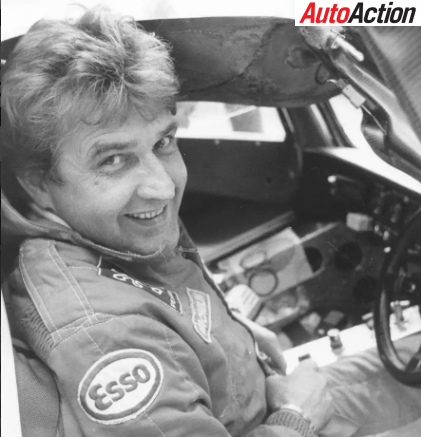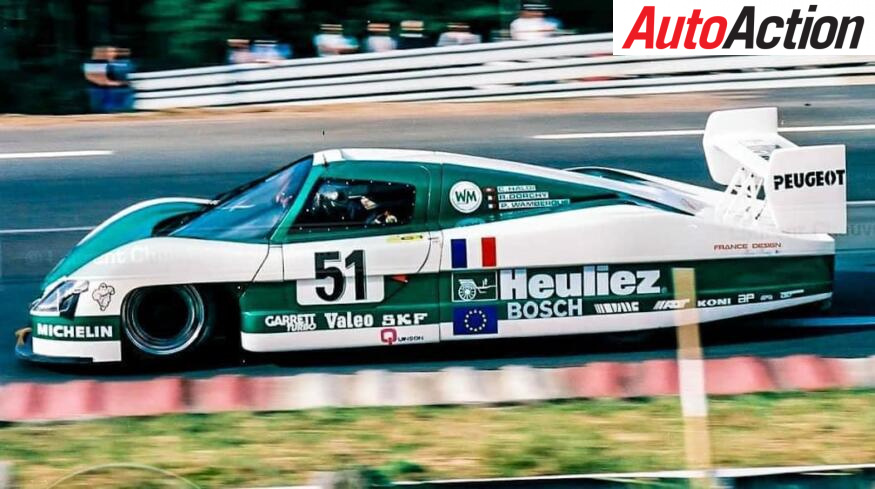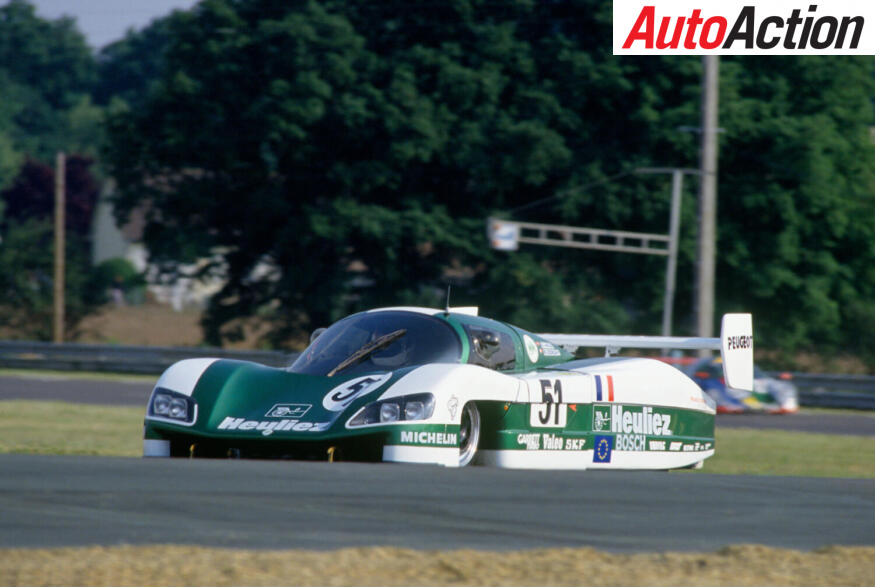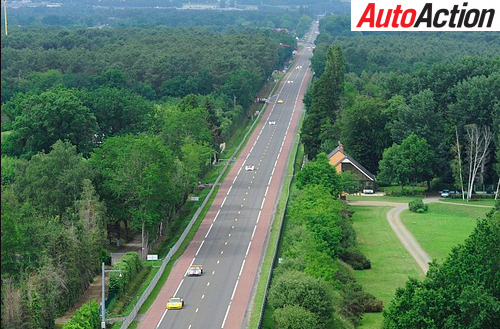Roger Dorchy and the Le Mans speed record

Frenchman Roger Dorchy, the driver who recorded the fastest ever speed down the infamous Mulsanne Straight at the Le Mans 24 has passed away at the age of 78.
Dorchy’s record speed of 407kph at the 1988 Le Mans 24 Hour down the Mulsanne Straight is one record that will likely never be surpassed, owing to the two chicane’s that were added to the 5.9 km stretch of public road in 1990, breaking the straight up into three sections.
Dorchy, a native of La Ferte-Saint-Samson in France’s northern Normandy region passed away on Wednesday 26 July at the age of 78, with his enduring speed record at the circuit de la Sarthe cementing his place in motorsport folklore.

Dorchy participated in 13 Le Mans 24 Hour races, but his legacy will be remembered for breaking the Mulsanne Straight speed record.
Behind the wheel of a WM P88 that had a V6 turbo Peugeot engine, the speed record came about when Dorchy realised that the car was not going to finish the race.
“After the start, around 10-11pm, the car began to show signs of weakness and overheating,” Dorchy said in 2013.
“We understood at that moment that the race was lost, that we would certainly not go to the end. So, I pressed the pedal, and it worked. An hour or two later, the car stopped for good.”

The WM P88 was the culmination of years of work to break the Mulsanne Straight speed record by the Welter Racing team
The story of why Dorchy decided to launch the ailing Peugeot down Mulsanne Straight in the first place, is a yarn that precedes the ’88 Le Mans by several years.
The initial WMP86 was built and run by French team Welter Racing, owned by Gerard Welter and Michel Meunier, with their original aim of building a speedy car that could at least finish the famous 24 Hour race.
This was first undertaken with the WMP86 which ran in 1986 Le Mans, and with Dorchy behind the wheel alongside compatriots Claude Haldi and Pascal Pessiot, they finished 67 laps behind the winning Porsche 962C, with their second car recording a DNF.
That resulted in a shifting of the goal posts and the idea of Project 400. After approaching the ruling body, the ACO (Automobile Club de l’Ouest) Welter convinced them that they would run in the next two Le Mans with the aim of achieving the 400 km/h barrier down the Mulsanne Straight.

Although the WM P88 wasn’t a Peugoet factory supported car, the manufacturer supported Welter Racing in it’s attempt at breaking the Le Mans speed record. Image: LAT
After the ACO agreed, Welter was free to approach a tyre manufacturer (Michelin) to produce a soft compound tyre that would be capable of reaching 410 kph, which Michelin then produced.
With that, the team built the WM P87 for the 1987 Le Mans, with Dorchy Philippe Gache, and Dominique Delestre behind the wheel, all of whom were knowingly lumped with the aim of breaking the 400 mark.
Although Welter Racing was never a factory works team, Peugeot allowed them to use the wind tunnel every Sunday for five months straight whilst they developed the car.
The WM87, which was essentially a special aerodynamicists project to achieve straight line speed, then had a miserable time of it in the ’87 Le Mans when the turbochargers packed in after 13 laps, and the ACO giving them a recorded time of 387 km/h.
Welter claimed that the ACO’s recorded time was wrong and didn’t match their data, which led to new tachometer radar’s being installed at the end of the straight for the following year.

Team owner Gerard Welter (R) with Peugeot’s director of racing, Jean Todt. Welter was a curious man in his own right, even surviving an assassination attempt on his life in 2011
Their return in 1988 saw the new WM P88 arrive with a more powerful engine capable of producing 900 horsepower with around 65 kilos of weight dropped from the total build.
As in previous years, the WMP88 suffered numerous issues, forcing it to spend hours in the pits due to engine and bodywork problems. When they managed to get it back out, Dorchy was given he go-ahead to attempt the record.
On the risk associated with attempting the record, Dorchy said that if he didn’t attempt it, he had no right in being there in the first place.
“We had to ask ourselves a few questions anyway. But if you wondered too much, you had no place in the car.
“We have the impression that it’s not going to stop when we press the pedal and the revs increase, we expect, perhaps, to eventually take off… Fortunately, the Mulsanne has a precise distance!”

Dorchy (R) sitting on the #51 WM P88 that had broken the speed record during the night.
Vincent Soulignac, the WM engineer in 1988, told his version of events, and the information that he relayed to Dorchy prior to leaving the pits.
“On Saturday night during the race, around 22:00, an engineer from the SFIM told me they had a new radar gun, the Mesta 208,” he said.
“I called Roger (Dorchy) and asked him to put an extra 50 grams of boost pressure on the engine. After that, the car made it to 407 kph.
“Gerard (Welter) and I were both working for Peugeot, and it was agreed that, given the launch of the Peugeot 405, we would declare the speed record at 405 kph.”
So although the record was recorded at 407 km/h, officially, it’s 405 km/h.

The 5.9 km Mulsanne Straight was a part of motorsport folklore, now consigned to history due to the addition of two chicane’s.
The following year, an updated version of the WM P88 caught fire at Indianapolis Corner, and the Welter Racing team retired the car. The #51 car that broke the record was sold in auction without its engine, which was said to still be in the possession of Welter, who passed away in 2018.
Dorchy took part in 13 Le Mans 24 Hour races with a best finish of fourth, driving for WM Esso, which earned him a LM GTP class podium (P2). But he’ll forever be remembered as the fastest man to ever grace the world’s most historic motor racing event.

Dotchy’s class podium (4th outright) was his highest Le Mans finish, driving the WM P79/80 Peugeot. Image: LAT
For more of the latest motorsport news, pick up the latest issue of AUTO ACTION.
Auto Action, Australia’s independent voice of motorsport.
PODCAST: The latest episode of the Auto Action RevLimiter podcast is out now!
In the latest episode, the team discuss Supercars parts & parity with an SMP preview. F1’s Oscar & Dan show, and the Aussie’s take on NASCAR!
Listen on your podcast app of choice or here on the Auto Action RevLimiter podcast.

Listen to our latest podcast episode on your podcast app of choice or here on Apple Podcasts.
For more of the latest motorsport news, pick up the latest issue of AUTO ACTION. Or subscribe here.






